Showing 97–108 of 135 results
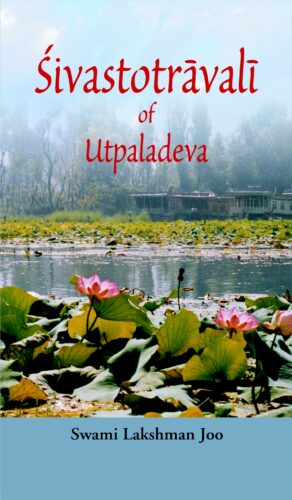
The Sivastotravali is a collection of hymns composed by Utpaladeva, the great mystic and philosopher of non-dualistic Kashmir Saivism, and the Paramaguru of the illustrious Abhinavagupta. This book brings out the English exposition, for the first time, of the hymns by Swami Lakshman Joo, the renowned scholar of Kashmir Saivism.
Utpaladeva (late 9thearly 10th century) was a great philosopher of the School of Recognition of non-dualist Kashmir Shaivism, who established its philosophy on a solid basis with his Ishvarapratyabhijna Karikas (Verses on the Recognition of the Lord), and with three philosophical works, the Siddhitrayi. He was the predecessor (Paramaguru) of the great Abhinavagupta. But at the same time he was a mystic of bhakti as we find it here expressed in his Hymns Shivastotravali. For him, bhakti and advaita were not opposed to each other but complementary.The Shivastotravali is a collection of verses and hymns which are an expression of intense bhakti, longing for the Lord, and the mystical experience of the author and his non-dual union with Shiva. They were arranged in 20 chapters or Stotras by his disciples. Of highly poetic quality, these verses belong to the greatest mystical literatures of the world. Swami Lakshman Joo, the last Shaivacarya of Kashmir (19071991), combined in himself the great scholar of the tradition of Kashmir Shaivism, who taught and expounded its texts time and again to his disciples and to scholars from all parts of the world, and the perfect yogi who had an intimate experience of the spirituality contained therein. He had a special love for the Shivastotravali and expounded it many times in different languages (Kashmiri, Hindi and English). His edition of the Shivastotravali with Kshemaraja’s commentary and his Hindi translation remains the standard text. In the present volume his exposition in English is brought out for the first time.

The Sivastotravali is a collection of hymns composed by Utpaladeva, the great mystic and philosopher of non-dualistic Kashmir Saivism, and the Paramaguru of the illustrious Abhinavagupta. This book brings out the English exposition, for the first time, of the hymns by Swami Lakshman Joo, the renowned scholar of Kashmir Saivism.
Utpaladeva (late 9thearly 10th century) was a great philosopher of the School of Recognition of non-dualist Kashmir Shaivism, who established its philosophy on a solid basis with his Ishvarapratyabhijna Karikas (Verses on the Recognition of the Lord), and with three philosophical works, the Siddhitrayi. He was the predecessor (Paramaguru) of the great Abhinavagupta. But at the same time he was a mystic of bhakti as we find it here expressed in his Hymns Shivastotravali. For him, bhakti and advaita were not opposed to each other but complementary.The Shivastotravali is a collection of verses and hymns which are an expression of intense bhakti, longing for the Lord, and the mystical experience of the author and his non-dual union with Shiva. They were arranged in 20 chapters or Stotras by his disciples. Of highly poetic quality, these verses belong to the greatest mystical literatures of the world. Swami Lakshman Joo, the last Shaivacarya of Kashmir (19071991), combined in himself the great scholar of the tradition of Kashmir Shaivism, who taught and expounded its texts time and again to his disciples and to scholars from all parts of the world, and the perfect yogi who had an intimate experience of the spirituality contained therein. He had a special love for the Shivastotravali and expounded it many times in different languages (Kashmiri, Hindi and English). His edition of the Shivastotravali with Kshemaraja’s commentary and his Hindi translation remains the standard text. In the present volume his exposition in English is brought out for the first time.
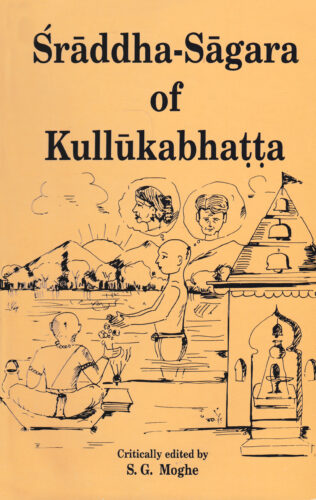
In this critical edition of Sraddha-Sagara, by Kullukabhatta, Prof. Moghe highlights the importance of Sraddha-Sagara and its author, focussing specially on Kullukas status vis-a-vis other writers on sraddha.
A religious institution with millennia of uninterrupted continuity, shraddha (broadly) is an individuals homage, through certain ritualistic offerings, to the sacred memory of his ancestors. Involved in the shraddha-ritual is also, perhaps, the Hindu belief in the doctrine of metempsychosis. Shraddha-Sagara, written sometime during 1520-1620, by a celebrated scholar: Kullukabhatta, offers an authoritative, manifold exposition of this ageless ritual. Yet, in treating the shraddha-theme from Dharmashastra, its author, Kulluka exhibits a striking originality by applying the Purva-Mimamsa logic to ancestral worship. Which makes his Shraddha-Sagara both unique and unrivalled in the literature of the genre. Here is the first ever critical edition of this rare, hitherto-unpublished work with Kullukas original text (in Devanagari script) and a comprehensive introduction, footnotes and comments. Himself a reputed scholar of Dharmashastra literature, the editor: Professor Moghe, highlights the importance of Shraddha-Sagara and of its author, focussing specially on Kullukas status vis-a-vis other writers on shraddha. Essentially in the nature of a digest, Kullukabhattas work abounds with quotations. Which Prof. Moghe not only identifies, but also locates in their diverse sources : smritis, shrutis, puranas, astronomical/astrological texts, and even grammatical treatises. Also demonstrating how and where Kullukas readings are corrupt, deficient or grammatically flawed, the book suggests correctives with variant readings in the footnotes. Supplementing this critical edition are seven appendices, listing/indexing the whole range of works, referred to in Shraddha Sagara.
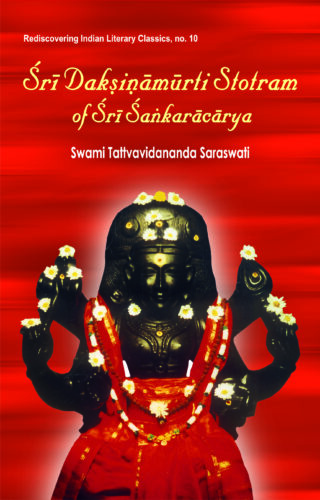
Here is a critical, verse-to-verse commentary on the Sri Daksinamurti Stotram, a work authored by saint-scholar Sri Sankara glorifying äsvara, along with its Roman transliteration and translation into English. Dealing with themes like knowledge, maya and plurality of the world as given in the text, the author brings out significance of the stotram through original yet common examples.
Of the monumental literature authored by Sri Sankara, the Sri Daksinamurti Stotram, comprising stotras in praise of the glory of Isvara, holds a significant place. Singing the importance of nirguna nirakara paramesvara, the text elaborates on Lord Sri Daksinamurti as embodiment of atma-dharma and knowledge and describes the essential nature of Brahman. Here, Swami Tattvavidananda offers his critical, verse-to-verse, detailed commentary on the Daksinamurti Stotram along with its transliteration in Roman script and its English translation. He explains the ultimate truth as presented in that text through a variety of experiences of the false individual caught in the web of samsara. Through original and contemporary yet common examples, he brings out the purport of the Stotram and enumerates various stages of sadhana to understand the ultimate reality and develop an attitude of witness to the inner world of feelings. Themes like creation and nature of universe, process of gaining knowledge, maya, plurality of the world and the supreme reality, the jiva are explained as given in the text. The fluent and easy-to-understand commentary incorporates ancient and modern scientific theories to explain their inadequacies and contentions of various schools of philosophy on different aspects to enable a broader understanding of the text. The work will interest scholars of ancient Indian philosophy and literature and inspire and motivate general readers keen on acquiring insights into religious and philosophical questions.

Here is a critical, verse-to-verse commentary on the Sri Daksinamurti Stotram, a work authored by saint-scholar Sri Sankara glorifying äsvara, along with its Roman transliteration and translation into English. Dealing with themes like knowledge, maya and plurality of the world as given in the text, the author brings out significance of the stotram through original yet common examples.
Of the monumental literature authored by Sri Sankara, the Sri Daksinamurti Stotram, comprising stotras in praise of the glory of Isvara, holds a significant place. Singing the importance of nirguna nirakara paramesvara, the text elaborates on Lord Sri Daksinamurti as embodiment of atma-dharma and knowledge and describes the essential nature of Brahman. Here, Swami Tattvavidananda offers his critical, verse-to-verse, detailed commentary on the Daksinamurti Stotram along with its transliteration in Roman script and its English translation. He explains the ultimate truth as presented in that text through a variety of experiences of the false individual caught in the web of samsara. Through original and contemporary yet common examples, he brings out the purport of the Stotram and enumerates various stages of sadhana to understand the ultimate reality and develop an attitude of witness to the inner world of feelings. Themes like creation and nature of universe, process of gaining knowledge, maya, plurality of the world and the supreme reality, the jiva are explained as given in the text. The fluent and easy-to-understand commentary incorporates ancient and modern scientific theories to explain their inadequacies and contentions of various schools of philosophy on different aspects to enable a broader understanding of the text. The work will interest scholars of ancient Indian philosophy and literature and inspire and motivate general readers keen on acquiring insights into religious and philosophical questions.
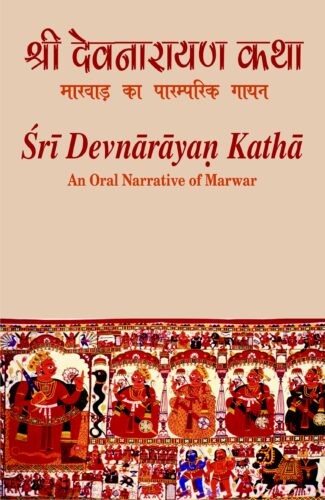
The book presents the Sri Devnarayan Katha, an oral narrative extolling the life and deeds of Sri Devnarayan, a much-venerated deity of Rajasthan, that provides insights into the complex social history and sacred significance of the deity, his worship and his devotees. It thus explores questions on our understanding of verbal arts and oral traditions.
The book presents the Sri Devnarayan Katha, an oral narrative extolling the life and deeds of Sri Devnarayan, a much-venerated deity of Rajasthan, that provides insights into the complex social history and sacred significance of the deity, his worship and his devotees. It thus explores questions on our understanding of verbal arts and oral traditions.
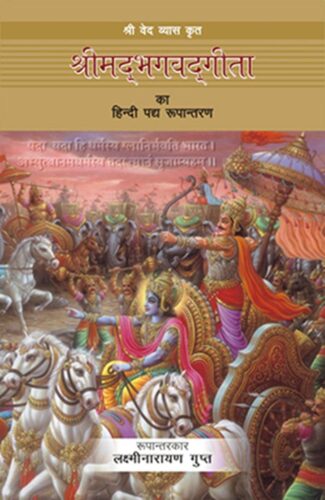
Gita is one of the several educational books maintaining its popularity. On reaching US, the author found that there are several English translated editions of Gita, but none in Hindi in verse formation. So, here the author has made an effort.
Gita occupies a special place among Indian spiritual literature. On reaching America the author found several translations of Gita available in English, though only a few were in the form of poetry. He felt scarcity of Hindi translations of these verses. This translation is a sincere attempt in filling this gap. In modern times when Hindi speakers having knowledge of Sanskrit to understand the roots of shlokas are very rare, translation of these shlokas in poetic form will not only help in understanding their meaning but also in memorizing them easily. The language used in this poetic form is very simple and even many Sanskrit words of Gita, commonly used in Hindi have been adopted. This sincere attempt of Dr Gupt transmits the actual meaning of the verses of the Gita to the readers rather than giving the views of a translator. The lovers of Gita would be highly benefited by this edition as it has been written specially to satisfy their thirst.
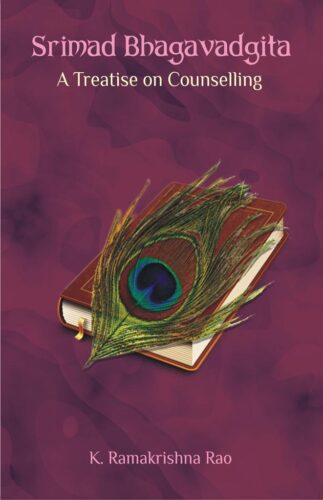
This book is a modest attempt to bring into focus the psychological implications and some of the lessons we could learn from the Bhagavad Gita that are as relevant to the troubled world today as they were then.
The Srimad Bhagavad Gita is an epic story of the battle between good and evil, and the psychological hurdles one faces in such a battle, in addition to the physical hardships one has to endure. The former are more difficult to handle. The Gita is a treatise on celestial counselling that Arjuna needed in the midst of his battle with the evil forces that happened to be a part of his larger family. It is an illustration that man is a composite of good and evil. His goal is to overcome evil and promote the divine within. There is much in the Gita that counsellors in various fields could learn for their benefit.
The Gita was a constant companion of Mahatma Gandhi who developed his concept of nonviolence and the strategy of satyagraha as effective instruments for conflict resolutions. Satyagraha was his way of resolving the manifest conflict between good and evil by synthesizing the two opposite by a dialectical process.
This book is a modest attempt to bring into focus the psychological implications and some of the lessons we could learn from this epic narrative that are as relevant to the troubled world today as they were then.

The Surya Siddhanta is one of the earliest astronomical texts of the ancient India. Under the tradition of Upanishads, the Surya Siddhanta reveals the knowledge of the planetary motion of the solar system directly given by the Sun god to Mayasura, subsequently passed down in oral form. Later on Varahamihira (ce 505-87) discussed the doctrine of Surya Siddhanta in his book on Pancasiddhantika. The present Hindi translation of the Sanskrit verses of Surya Siddhanta is based on the famous English translations by Reverend Ebenezer Burgess (1860) and Pt. Bapu Deva Sastry (1861).
Significant coverage in the fourteen chapters of the book is on units of time, length of the year of gods and demons, day and night of Brahma, the elapsed period since creation, planetary eastwards movement and sidereal revolution. The lengths of the earths diameter, circumference are also given. Eclipses and colour of the moons eclipsed portion are mentioned. The appendices provide the modern aspect on these topics. The researchers of ancient astronomy and others may find it an interesting reading.
The Surya Siddhanta is one of the earliest astronomical texts of the ancient India. Under the tradition of Upanishads, the Surya Siddhanta reveals the knowledge of the planetary motion of the solar system directly given by the Sun god to Mayasura, subsequently passed down in oral form. Later on Varahamihira (ce 505-87) discussed the doctrine of Surya Siddhanta in his book on Pancasiddhantika. The present Hindi translation of the Sanskrit verses of Surya Siddhanta is based on the famous English translations by Reverend Ebenezer Burgess (1860) and Pt. Bapu Deva Sastry (1861).
Significant coverage in the fourteen chapters of the book is on units of time, length of the year of gods and demons, day and night of Brahma, the elapsed period since creation, planetary eastwards movement and sidereal revolution. The lengths of the earths diameter, circumference are also given. Eclipses and colour of the moons eclipsed portion are mentioned. The appendices provide the modern aspect on these topics. The researchers of ancient astronomy and others may find it an interesting reading.

The Taittiriya Upanisad is offered in three chapters treated singly by the author who reveals the invisible thread that runs through them. The analytical commentary results from the insights he has gained from interactions over the years.
The Upanishads capture the quintessence of Indian spiritual wisdom unfolding deep-set, highly perceptive reflections on human existence and how it is related to cosmic mystery. Authored by enlightened seers, at different times, during 1500-200 b.c., the Upanishadic message inheres neither a promise of heaven, nor scare of hell. Rather, it is a magnificent vision that raises human consciousness to sublime heights. The Taittiriya appended to the Krishna (Black) Yajur Veda is one of best among the principal Upanishads. And, schematically, is offered in three chapters, entitled: (1) Shiksha Valli, (2) Brahmananda Valli, and (3) Bhrigu Valli which each Swami Muni Narayana Prasad treats singly, superbly revealing the invisible thread that goes through all of them. With origjnal Sanskrit text, its Roman transliteration and easy-to- understand English paraphrase, this stimulating, at once analytical commentary grows from Swami Muni Narayana Prasads prolonged reflections on the Taittiriya Upanishad, coupled with the insights he acknowledges to have gained from Nataraja Gurus discourses on different Upanishadic themes, Narayana Gurus mystico-philosophical poems, and numerous sessions of intellectual interaction with different groups of scholars.

The Taittiriya Upanisad is offered in three chapters treated singly by the author who reveals the invisible thread that runs through them. The analytical commentary results from the insights he has gained from interactions over the years.
The Upanishads capture the quintessence of Indian spiritual wisdom unfolding deep-set, highly perceptive reflections on human existence and how it is related to cosmic mystery. Authored by enlightened seers, at different times, during 1500-200 b.c., the Upanishadic message inheres neither a promise of heaven, nor scare of hell. Rather, it is a magnificent vision that raises human consciousness to sublime heights. The Taittiriya appended to the Krishna (Black) Yajur Veda is one of best among the principal Upanishads. And, schematically, is offered in three chapters, entitled: (1) Shiksha Valli, (2) Brahmananda Valli, and (3) Bhrigu Valli which each Swami Muni Narayana Prasad treats singly, superbly revealing the invisible thread that goes through all of them. With origjnal Sanskrit text, its Roman transliteration and easy-to- understand English paraphrase, this stimulating, at once analytical commentary grows from Swami Muni Narayana Prasads prolonged reflections on the Taittiriya Upanishad, coupled with the insights he acknowledges to have gained from Nataraja Gurus discourses on different Upanishadic themes, Narayana Gurus mystico-philosophical poems, and numerous sessions of intellectual interaction with different groups of scholars.
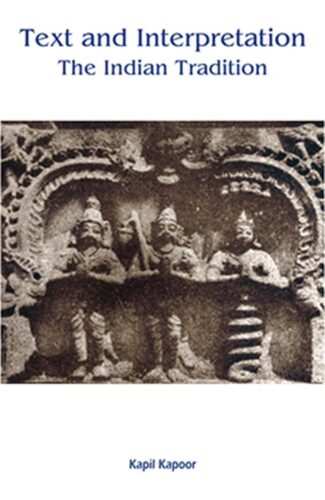
The present study is the comprehensive analysis of interpretative tradition, concerned with the problem of determining meaning in verbal texts, and examines the nature of the texts and the typology of textual situations. It investigates the instruments of interpretation and illustrates their use in various texts and exegetes.
Linguistic communities are interpretative they have shared frameworks and strategies to fix the meaning of what is experienced through senses or communicated through language. India presents one such interpretative community in which the three major contending schools of thought the Brahmins, the Buddhists and the Jains flourished and fought. The presence of a strong interpretative tradition suggests the existence of texts and issues that are perennially important and also a certain freedom of mind that the community has enjoyed and guaranteed. The present study is perhaps the first comprehensive analysis of this tradition concerned with the problems of determining meaning in verbal texts. It examines the nature of the texts and the typology of textual situations in response to which a system of interpretation developed and became a shared mode of interpretation, the Shastra-Paddhati. It sets up several typologies of meaning, of textual situations and of the interpretative strategies. The book then investigates the instruments of interpretation, verbal testimony, sarvabhauma siddhanta (the meta-principle), sangati (coherence), paribhasha (metarules), laukika-nyaya (common principles of judgement), vyakarana (grammar), nirvacana, (exposition or etymology) and verbal symbolism and illustrates the use that is made of them in different kinds of texts, shruti, smriti and kavya, and by different exegetes such as Shankara. At a time of resurgence of interest in the Indian intellectual traditions in grammar, philosophy, logic, theories of meaning and poetics and as part of a transdisciplinary search for abstract structures of knowledge this book should be of interest to students and scholars of Indian languages, linguistics, semiotics and literatures and generate lively intellectual controversy among scholars and motivate further research and study in these areas.
| There are no products |